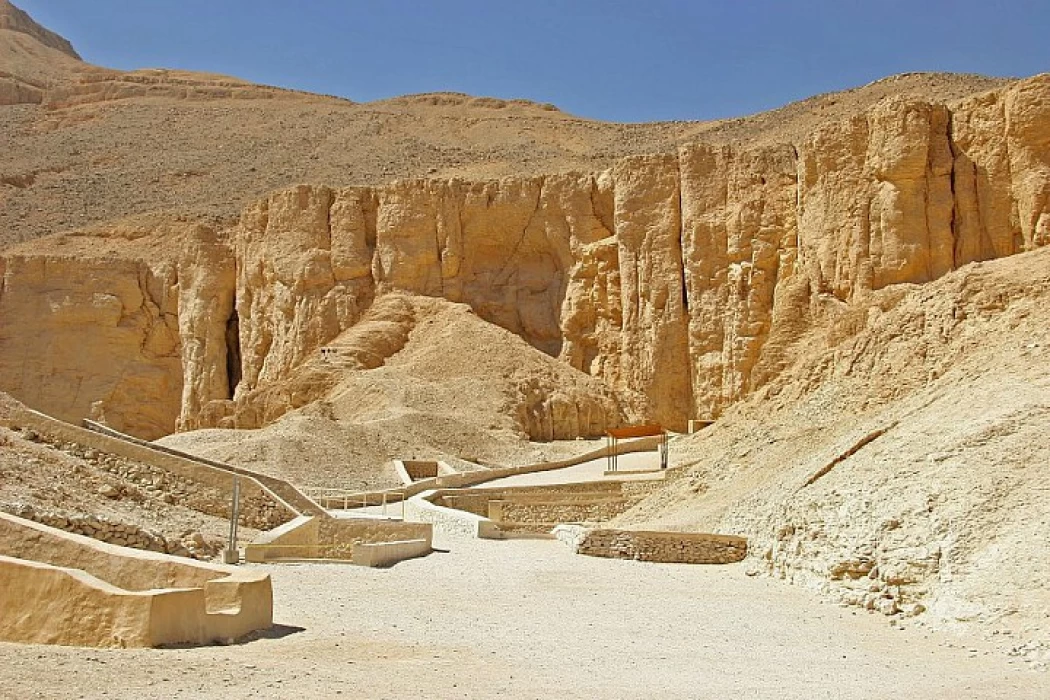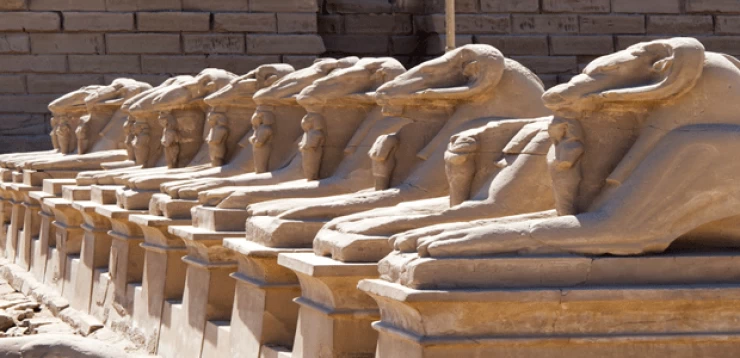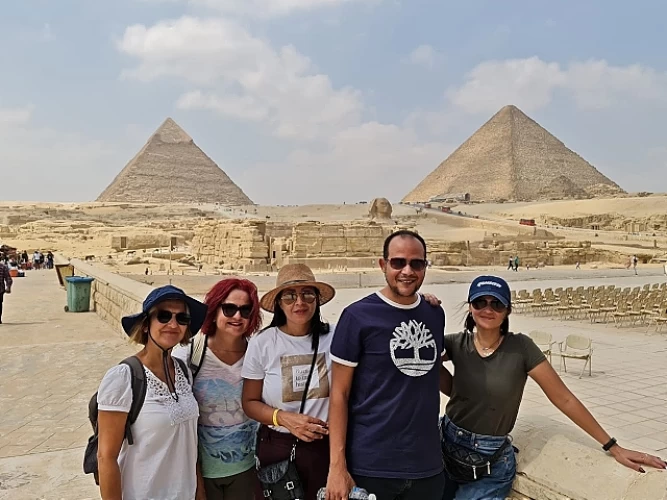
Valley of the Queens
The Queen's valley
The Valley of the Queens, located in Pharaonic Egypt on the West Bank in the city of Luxor, “ancient Thebes,” still holds secrets that have yet to be revealed, such as the tomb of Queen Est Nefert, the second wife of Ramses II, which is lost under the sand.
Buried in the Valley of the Queens, the wives of the pharaohs in ancient times, and was known as “Ta-Set-Neferu”, meaning “the place of beauty”, and consists of the main valley, which includes about 91 tombs, in addition to sub-valleys that include 19 other tombs, such as: Prince Ahmose Valley, Hubbell Valley, and Dolmen Valley. The Valley of the Queens was a burial place for pharaoh’s queens and princesses in 1070 to 1550 BC during the 18th, 19th and 20th dynasties of Egypt. Priests took care of their graves through holding daily funerals and praying for them.
This place is situated close to the famous. Valley of the Kings, which is found on the western side of the Nile River in Luxor Governorate. Consequently, this is why they chose it as the final resting place not only because it is closely linked to the valley of kings but also because there’s a certain sacred cave at the entrance where Hathor was worshipped by ancient Egyptians as giving rebirth to dead souls.The third reason is its sandiness.
The Valley of the Queens includes one of the most important tombs, the tomb of Princess Ahmose, daughter of Sakhnen-Ra and Queen Setjahuti, dating back to the reign of Thutmose I. Several members of the nobility were buried in this tomb. The Dolmen Valley contains an ancient trail that was used by laborers traveling from Deir el-Medina to the Valley of the Queens.
Along this road is a small rock temple dedicated to the god Ptah. The tombs in this valley are simple in shape, all consisting of a chamber and a shaft for burying mummies, and some tombs have been extended in size to accommodate the burial of more than one person, and include the bodies of royal princes and princesses, as well as some nobles.
There is also a princess tomb dating back to the time of Amenhotep III. The graves include parts of the burial equipment of several members of the royal family. Canopic vessels were discovered next to one of the princesses, who is believed to have lived in the middle of the Eighteenth Dynasty.
During the Nineteenth Dynasty, the tombs of the Valley of the Queens were used exclusively for royal women, as several high-ranking wives were buried, such as: Ramses I, Ramses II, and one of the most famous queens in the valley, Queen Nefertari (1224-1290), whose tomb has multicolored carved inscriptions that are still intact, and most of Ramses II's sons were buried either in princely tombs in the Valley of the Kings or in princess tombs in the Valley of the Queens.
Nefertari was one of the five wives of King Ramses II. Nefertari was his favorite, and her tomb is considered one of the most beautiful tombs in Egypt, and the mummy was placed in the company of the gods, and a golden crown with two feathers was placed on her head.
During the beginning of the Twentieth Dynasty, the Valley of the Queens was still widely used only for the wives of kings and princes, but at its end there was economic turmoil, and records show that workers went on strike during the reign of Ramses III, and some of them dug up the tombs and stole their contents of gold and antiquities, and with popular anger the burial site no longer belonged only to the royal family after the end of the Twentieth Dynasty, as many tombs were modified to accommodate more dead.







-webp.webp)










